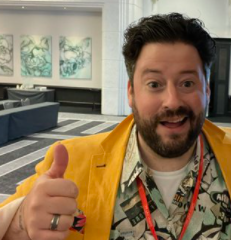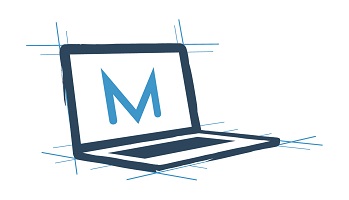Disrupting the Modern Workplace: Are our IT teams ready to drive change?
Welcome! This blog series will examine how traditional IT team dynamics fit in the Modern Workplace, and whether we are prepared to manage and deploy solutions effectively in a cloud-first world.
Sometimes it’s best to sit and listen.
In a recent meeting I sat back as the attendees “discussed” their vision for addressing a specific challenge. I was a late invitee, and it was clear to me that the brief overview of the agenda I was given didn’t match the meeting’s intent.
There was a business challenge that needed to be addressed, but the actual intent of the meeting was much broader. It turned into a round table discussion about many of the challenges that we face and how we can overcome them.
I’m not known for keeping quiet. Typically, I jump into a conversation early and make sure my opinions are known. In this meeting I chose to sit back and listen. The perspective I gained was invaluable. Once we had exchanged the typical pleasantries, one colleague led with a question. She had barely completed her question when another team member offered a solution. Unfortunately, the “solution” being offered was little more than a defense of the status quo.
The back and forth continued and I quickly realized that while everyone was in the same discussion, both sides were talking about something different. One team member was looking for a new, modern solution to a problem, while the other team member only saw challenges – the costs involved, man hours, lack of expertise, and a litany of other issues were brought up. No one bothered to ask if it was worth it – or even worse, if there was a workable solution available that we could easily leverage. As technologists on the forefront of workplace modernization we are by nature disrupters. We want to empower our users to do more, but it can be difficult to share our vision and gain traction on deploying modern solutions. Our teams don’t always share a unified vision, and when we do, we frequently talk past each other.
Challenges and Siloes in the Modern Workplace
In the Modern Workplace these conversations seem to happen more and more frequently. Technology changes, and with that IT Pros need to change as well. In previous blog posts I have explored how the modern workplace has changed, how IT pros have changed, and how our end users have changed. We have established the idea that in the Modern Workplace, IT teams should exist to empower our end users, not act as roadblocks. Most companies and teams have added IT pros that specialize in modern workplace tools – device management through Microsoft Endpoint manager, productivity suites like Office 365, and collaboration tools like Teams and SharePoint Online.
We have laid the groundwork for modernization, but many of us are having a lot of growing pains in determining how to best deploy these solutions to our end users. Legacy solutions eat up valuable resources – from licensing costs to administrative overhead – while we are already paying for management suites that include modern tools to replace legacy solutions. Our new tools are underutilized, while older solutions leave us vulnerable.
What is driving the redundancy and inefficiency? Part of it certainly falls back on legacy IT resources who don’t trust modern tools or actively work to prevent their use, but I believe there’s an even bigger issue at play. We don’t sit and listen to each other. Our teams aren’t built to pivot, and we lack the ability to quickly vet and deploy new tools.
In every company I have been in for the last several years there has been a disconnect between teams. I have been working with Microsoft 365, Azure Active Directory, and the Enterprise Mobility and Security suite. My job has been to learn and understand the tools that we were paying for and how they would best fit in our environment. One of the most common issues I have run into is that a lack of awareness between teams prevents taking advantage of the technology we are paying for. Meetings lead to a lot of people talking past each other. Discussions lead to talk of “parking lots” and “road maps,” but key initiatives keep getting pushed by the wayside.
We can sit back and blame legacy resources, ineffective project management, or a lack of manpower – but perhaps the problem is that we are asking the wrong questions. We offer solutions before listening to a question, and later wonder why we haven’t made any progress. We defend the tools we have always been using, even if they leave modern collaboration tools vulnerable or unused. We defend the status quo because we find it comfortable. It fits into our paradigms and requires little movement from us.
What if we are the problem? We talk about wanting to disrupt the status quo, but are our habits preventing us from making progress? What if the team structure we have created has kept key resources from collaborating more efficiently? Why should we expect that a decade old approach to IT team structure will fit into our modern workplace paradigm? Can we change how we do things? What will happen if we stop justifying our current methodology and ask if there’s better way?
In this blog series I will examine the tools that make up a modern workplace and how they are managed in many IT teams. We will explore the structure of a modern IT organization and how our tools fit into that structure. That will lead to a discussion on the efficiencies (and inefficiencies) created by legacy IT dynamics. Finally, we will examine whether it’s time to consider changing the structure of a modern IT organization by adding a Workplace Modernization team that owns tools like Microsoft Endpoint Manager, Teams, Office 365, and the Enterprise Mobility and Security suite.
I don’t pretend to have all the answers on modern workplace management, but I believe it’s time to start the discussion. Can we be better for our organizations by changing our team dynamics? Can we be more responsive, help to drive change, and improve culture by eliminating the siloes on our own teams? This series will focus on tools in the M365 suite. We will examine how those tools line up with legacy solutions, which teams have traditionally managed them, and if those same teams can be adapted to efficiently manage those tools moving forward. For now, I’m going to sit back and listen. I want to be a catalyst for change and hope that this self-examination can lead to growth moving forward.

